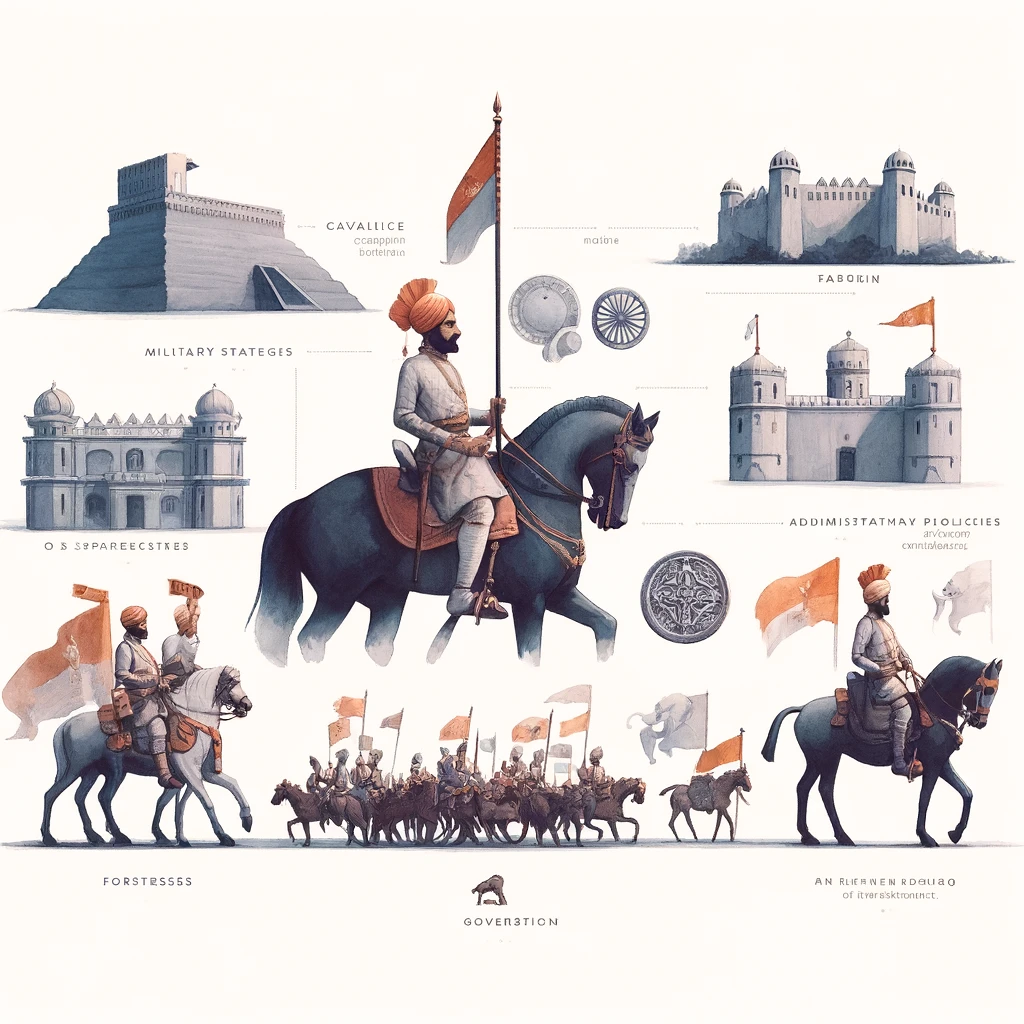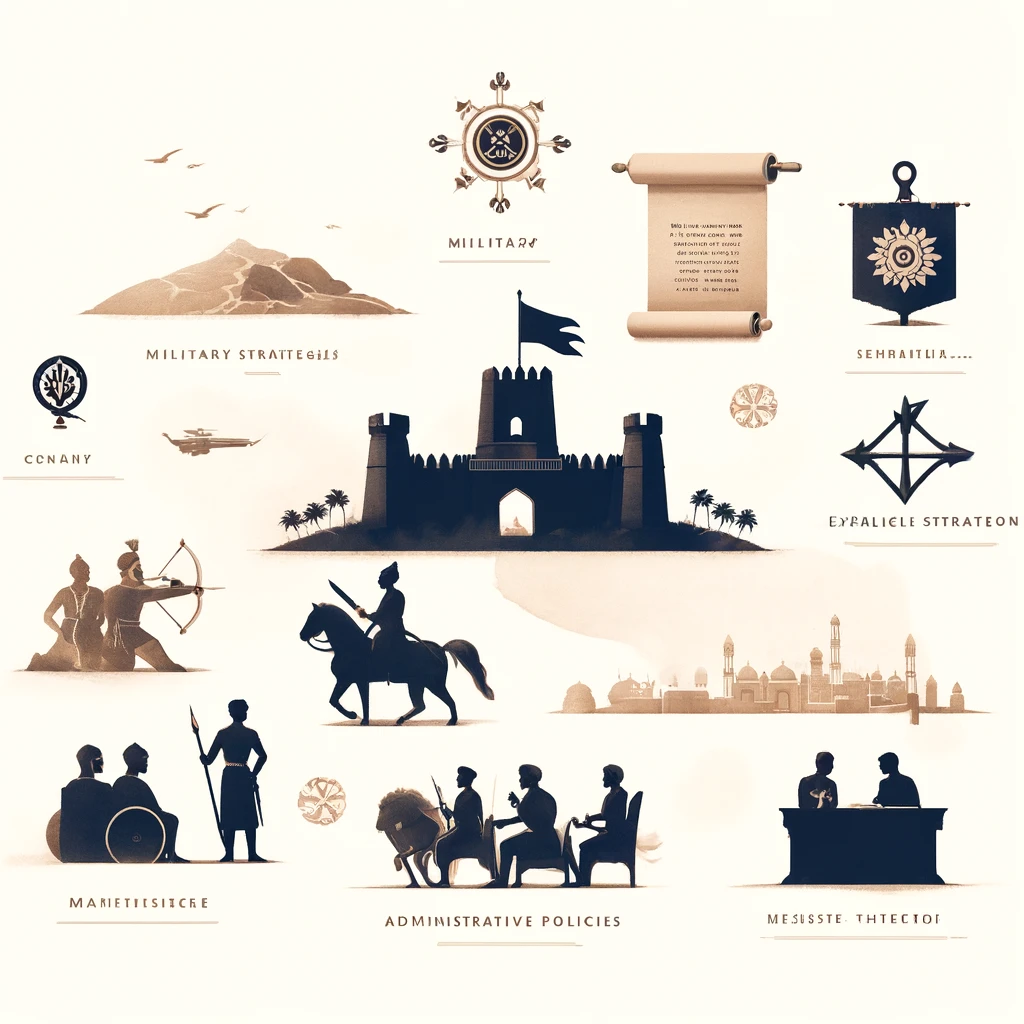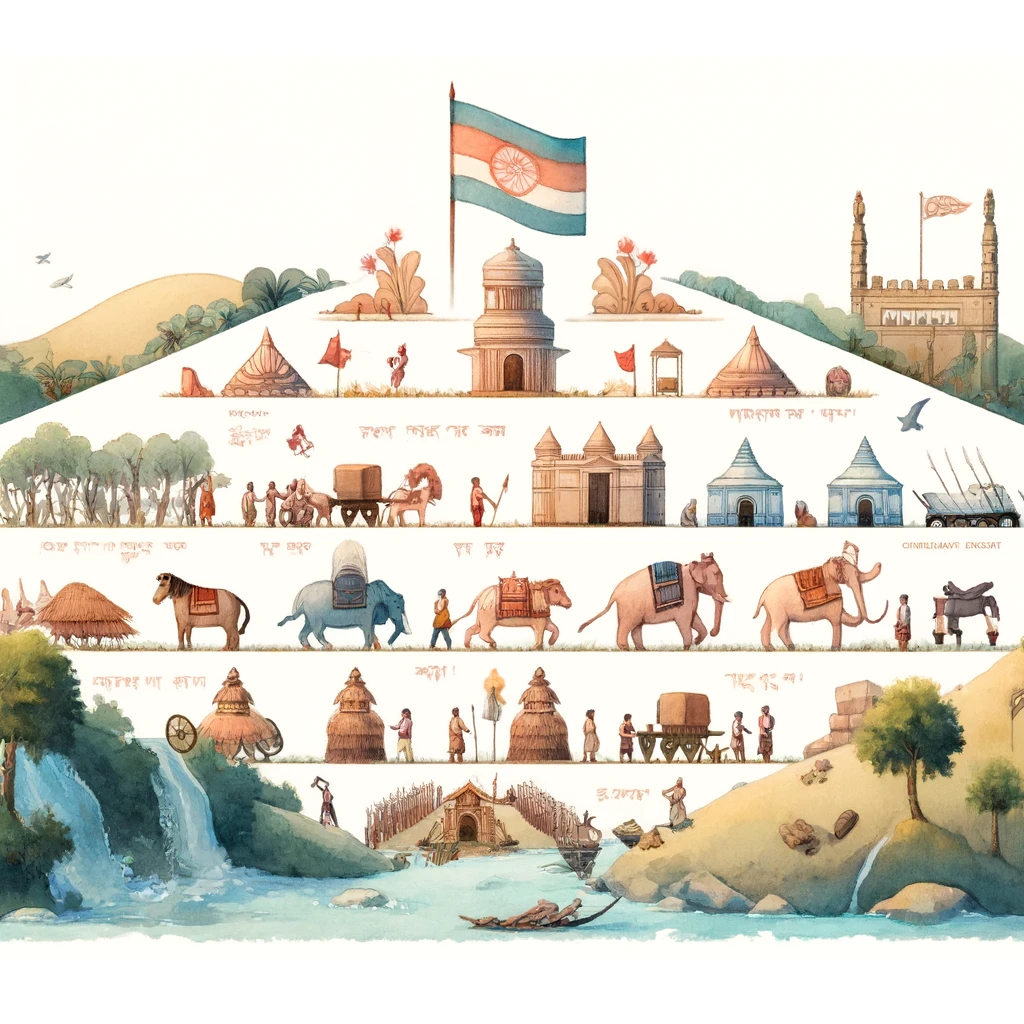Rise of the Maratha Power
The Maratha Confederacy emerged as a significant power in medieval Indian history during the 17th and 18th centuries. The foundation of Maratha power is closely associated with the legendary leader Shivaji Maharaj, who established an independent Maratha kingdom in 1674. Born in 1630, Shivaji was inspired by the deteriorating condition of the Deccan under the rule of the Bijapur Sultanate and the Mughals. He sought to create a sovereign Maratha state and successfully laid the foundation through his valor and administrative acumen.

Shivaji’s rise was marked by his strategic forts, guerilla warfare tactics, and diplomatic maneuvers. By the time of his coronation as Chhatrapati (king) in 1674, Shivaji had carved out a substantial kingdom, setting the stage for future Maratha expansion.
Military Strategies
The military strategies of the Marathas were pivotal to their success and expansion. Key aspects of their military tactics included:
- Guerilla Warfare: Shivaji and his successors perfected the art of guerilla warfare, using the rugged terrain of the Western Ghats to their advantage. They conducted swift raids, ambushes, and surprise attacks, which harassed larger and more traditional armies.
- Fortresses: The Marathas built and fortified numerous hill forts, such as Raigad, Pratapgad, and Sinhagad. These forts served as strategic bases for launching attacks and provided refuge during enemy invasions.
- Navy: Recognizing the importance of a strong navy, Shivaji established a formidable naval force. This allowed the Marathas to control the Konkan coast and protect their maritime interests against the European colonial powers and the Siddis of Janjira.
- Mobile Cavalry: The Maratha cavalry, known for its speed and agility, played a crucial role in their military campaigns. The light cavalry units could move quickly across vast distances, enabling rapid deployment and effective hit-and-run tactics.
Administrative Policies

The administrative structure of the Maratha Confederacy was as impressive as its military strategies. Key features of their administration included:
- Centralized Authority: The Peshwa (Prime Minister) was the chief executive officer, wielding significant power and authority. The Peshwa managed state affairs from the capital, Pune, while the Chhatrapati remained the symbolic head.
- Revenue System: The Marathas implemented a well-organized revenue system. The Chauth and Sardeshmukhi taxes were levied on conquered territories. Chauth was a 25% tax on revenue, while Sardeshmukhi was an additional 10% tax.
- Provincial Administration: The empire was divided into provinces, each governed by a Subedar or Senapati. These governors managed local administration, collected revenue, and maintained law and order.
- Justice and Law: The Marathas placed a strong emphasis on justice. Village councils, or Panchayats, were responsible for resolving local disputes, while higher courts addressed more serious cases. The administration promoted fairness and aimed to be accessible to the common people.
Resistance to Mughal Dominance
The Marathas played a pivotal role in resisting Mughal dominance in India. After the death of Shivaji in 1680, his successors, particularly his son Sambhaji and later the Peshwas, continued to challenge Mughal authority.
- Sambhaji’s Defiance: Sambhaji, who succeeded Shivaji, fiercely resisted Mughal attempts to subjugate the Marathas. Despite being captured and executed by Aurangzeb in 1689, his efforts inspired continued resistance.
- Peshwa Leadership: The Peshwas, especially Balaji Vishwanath and his son Baji Rao I, were instrumental in expanding Maratha’s power and consolidating their control over large parts of India. Baji Rao I’s military campaigns in North India further weakened Mughal control.
- Battle of Panipat: The Third Battle of Panipat in 1761 was a significant event where the Marathas, under the leadership of Sadashivrao Bhau, confronted the Afghan invader Ahmad Shah Abdali. Although the Marathas faced a tragic defeat, the battle marked the end of Mughal dominance, paving the way for the eventual decline of Mughal power.
Conclusion
The Maratha Confederacy strategies of expansion and administration highlight their remarkable ability to adapt and innovate in response to the challenges of their time. Their military prowess, coupled with effective governance, enabled them to establish a powerful and enduring empire. The Marathas’ role in resisting Mughal dominance significantly altered the political landscape of India, setting the stage for the rise of regional powers and the eventual advent of British colonial rule. The legacy of the Marathas continues to inspire pride and admiration in Indian history.

